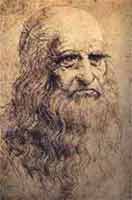
World history of computer science and first computers development.
Short outline
A rapid computer science (CS) development and it's scientific principles formation began at the
Before this time for almost 500 years all the calculus tools came to simple calculus devices for arithmetic operations. Almost all of the invented tools were based on cog-wheel to fix decimal notation 10 digits.
First sketch of 13-digit cog-wheel adder was drawn by Leonardo da Vinci at one of his diaries in about 1492.
In 1623, more than 100 years after Leonardo da Vinci death another project of 6-digit cog-wheel device for arithmetic operations was designed by German scientist Vilgelm Shikkard. Both inventions were found only recently and remains only in drafts.
The first real existed mechanical calculus device was "Pascaline", designed by prominent scientist Blez Pascal. It was 6 (or 8) digital cog-wheel device for decimal numbers adding and subtraction (1642).
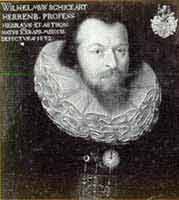
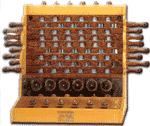
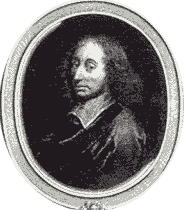

In 1673, 30 years after "Pascaline" another 12 digital device was designed by Gotfrid Vilgelm Leibnits. It was based on not only cog-wheeels, but also on step-roller. G.Leibnits wrote proudly, that his device can instantly multiply and divide big numbers.
More than 100 years pass, and only then some principal steps in calculus devices development were made in France at the end of XYIII, namely loom management with punch-cards, designed by Joseph Jakkard and calculation technology by Gaspar de Proni, who split calculation process to three stages: 1) to design the way of calculations, 2) to write a program as arithmetic operations sequence 3) to make calculations according to the program. Both of these two innovations were used by Englishman Charles Babbage, who made qualitively new step in calculation devices development - changing from hand-made to automatic calculations according to designed program. He designed the project of Analytical device - mechanical universal digital program-managed device
An operation principles and programs for Babbage device were composed by Ada Augusta Lovelace, Byron's daughter.
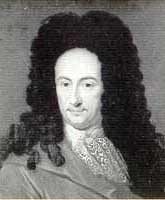
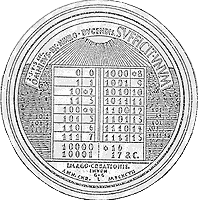
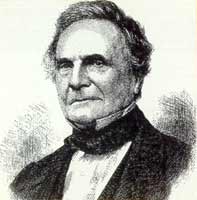
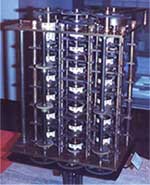
Some units of the device were created, but attempt to assemble the whole device failured because of it's bulk. It were required about 50.000 cog-wheels, to say nothing about the other. Babbage dreamed to put so bulky device to operation with the help of steam-engine. This idea was realized by American scientist Hovard Aiken, who create first relay-mechanical device in 1944. It arithmetic and storage blocks were based on cog-wheels.
Babbage ideas were long way ahead of his time, but Aiken's decision to use cog-whells may be considered as outdated idea. Ten years before, in 1934 German student Konrad Zuse decided to make household digital device with program management and (first in the world!) with binary notation. In 1937 Z1 (Zuse 1) device was put into operation. It was binary, 22 bit, with floated point, 64 digital storage capacity, and that's all was designed on mechanical (lever) basis!
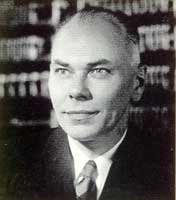
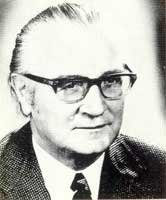
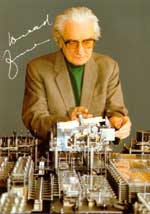
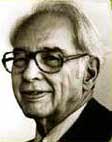
At the same time as binary device Z1 was put into operation, John Vincent Atanasoff (ethnic Bulgarian, who lived in the USA) began to design the calculus device, based on vacuum tubes (300 items).
Englishmen also were pioneers in electronics. In 1942-43 in England the electronic device "Coloss" was created by Alan Turing. It contained 2000 vacuum tubes. This device was destined for fascist Germany radiogram messages decoding. Zuse and Turing's works were kept in strong secret, and were known only by a few people. That's why these works doesn't make any response in the world. Only in 1946, when the information about EDIC (electronic digital generator and computer), created in the USA by J.Mauchly and P.Eckert appears, promising future of electronic technics become clear (there were about 18 thousands in the device, and the rate was about 3 thousands operations per second). However, the device remains digital, storage capacity was only 20 words, and the programs were kept outside the primary storage.
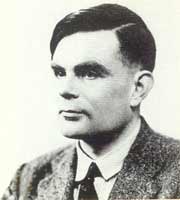
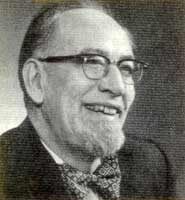
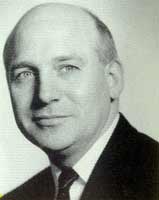
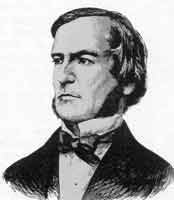
The final point in electronic devices creation was put, almost simultaneously, in 1949-52 by English, Soviet and American scientists. (Maurice Wilkes, 1949, Sergei Lebedev, 1951, John Mauchly, Presper Eckert, John fon Newman, 1952). In all cases programs kept in storage.
During the mechanical, relay and in the beginning of electronic periods of development the digital calculations were considered only within technology aspect, but it scientific basics only began to grow.
First scientific works, lately put into computer science basis are the following. There are binary notation research by Leibnits in XVII century, algebra of logic by George Boole in XVII century, abstract, or Turing's mashine, invented in 1936, theoretical results by Shennon, Shestakov, Gavrilov (30-th of 20-th century), which unite electronics and logics. The firs stage of computer science was accomplished by digital computer design principles, called by Eckert and Newman (USA, 1946), and independently by S.Lebedev (USSR, 1948).
This time digital technics wasn't perfect and inferior to analog one, which already have mechanical integrators, devices for differencial equation solutions, etc.
However, at the next stage the calculus technics made unexampled breakthrough at the account of computer intellectualization as analog technics remains within calculations automation.
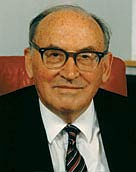
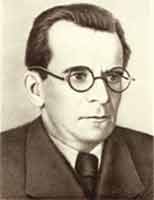
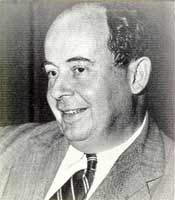
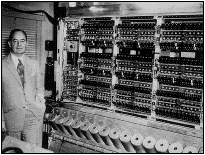
Digital technics development was concomitant by computer science formation. Computer sciense basics were replenished by digital automata theory, programming basics, artificial intelligence theory, computer design theory and computer technology. These component provided the formation of a new science, which is called "Computer Science" in the USA and "Informatics" in Europe. The big deposit to it's development was made by Ukrainian scientists (Victor Glushkov, Ekaterina Yushchenko, Zinoviy Rabinovich, Yuliya Kapitonova, Alexandr Letichevsky and others).
In the USSR, including Ukraine, "calculus technics" concept included as to call technical devices as for science of it's design.
Now for this purpose the term "informatics", that means the science about information receiving, transmitting storage and processing is used. In turn, this science is split to theoretical and applied branches. Theoretical branch learns the mathematical simulation of information processes. Applied branch includes design of computers, networks and multimedia, information technology computer processes, etc. The primary scientific basics of applied informatics are microelectronics and artificial intellect theory. If to concatenate two words "intellect" and "electronics", then a new word INELLELECTRONICS, more proper word for applied informatics will be get.
It worth to note, that we are at the very beginning of artificial intelligence, despite of many important achievements in this field and the great prospective of computer and "information human ability" confluence appears.
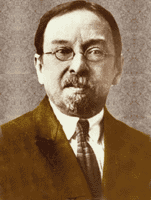
A short history survey. In 1870, a year before Babbage's death, English mathematitian Jevons constructed (might be, first in the world) "logic mashine", that mechanized simple logical conclusions.
Jevon's work became known in Russia in 1893, when professor Sleshinski from Odessa published the article "Jevons logic mashine" (Experimental physics and elementary mathematics herald, 1893, v. 7).
There were two "logical mashine constructors" in Russia - Pavel Khrushchev (1849-1909) and Alexander Shchukarev (1884-1936), who worked in Ukrainian high education establishments.
First the logic mashine was constructed by Khrushchev in Odessa. This device was "inherited" by Shchukarev, professor of Kharkov Technology Institute. He constructed mashine anew, made some considerable improvements, and more than once lectured about this mashine and it's practical applications. One of the lectures was delivered in Moscow Politechnical Museum in 1914. Professor Sokolov, who attended the lecture, wrote:
"If we have calculating mashines, that add, subtract and multiply numbers by lever turning, then it's time to have logic mashine, which able to make faultless conclusions by buttons pressing. It will save a lot of time and remain the field of creation, hypothesis, fantasy and inspiration to a human. This prophet words were said in 1914! ("Around the world" journal, № 18, article "thinking mashine").
It worth to note, that Jevons, who created "thinking mashine", doesn't foreseen any practical applications.
Unfortunately, Khrushchevs and Shchukarevs thinking mashines don't been saved. However, in article "Mechanization of thinking" by A.Shchukarev (Knowledge herald, № 12), the photo, detailed description and application recommendations are delivered.
So Alan Turing, who published his article "Is mashine able to think?" in 1950 had predecessors in Ukraine.
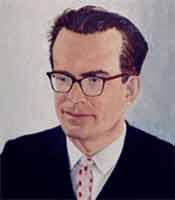
The best answer about mashine intellectual development belongs to Victor Glushkov:
"It's hardly to doubt, that more and more considerable part of the environment regularities will be conceived and applied by mashines in the future, but the human will always have top priority in thinking and conceiving processes. The truth of this conclusion is stipulated by history.
Humanity is not a simple sum of people. The intellectual and physical power is defined not only by sum of human muscles and brain, but also by human created material and cultural wealth. In this meaning, neither computer no set of computers, that are the results of human activity can't be more wise, than humanity as a whole, because at such evaluation computer is compared to the whole humanity with all tools and of course with computer being created.
It worth to note, that the priority of material and cultural values estimation belongs to human, so, the computer can't overcome the human also in this meaning.
So, as for pure information scope, then computers not only can, but also must overcome human ability, and in some narrow scopes it's the case now. But is social scope computers always remain no more, than human tools and assistants. (V.Glushkov. Thinking and cybernetics // Philosophy questions, 1963, v.1, in Russian).
As for microelectronics, the unit size now is coming to limit- 0.05 microns.
Nevertheless, there are not qualitively new and efficient elements, so, the term "intelelectronics" might to live for a long time.
As noted above, the general trend of computer development is artificial intellect units embedding. Computers, that are called so du to it's original destination-calculation automation are obtained another important application-to be human assistant in intellectual activity.
As for analog tools, the calculation precision remain low, it intellectualization failured and it defeat in competition with digitital tools. Time will show, is it temporary or ultimate situation.